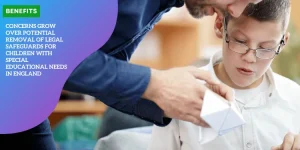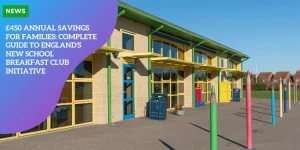The Two-Child Benefit Cap: A Tipping Point in the UK’s Battle Against Child Poverty
The issue of child poverty in the United Kingdom has reached a critical juncture, with mounting pressure on the government to scrap the controversial two-child benefit cap.
A growing coalition of charities, MPs, and campaigners has warned that unless this policy is reversed, the country may see record levels of child poverty by the end of the current parliamentary term.
Introduced in 2017, the two-child limit restricts child-related benefit payments to the first two children in a household, denying support for any subsequent children.
Despite being part of a broader austerity framework, the policy continues to spark widespread criticism for its disproportionate impact on low-income families.
With a long-awaited child poverty strategy due for publication, the debate over this cap has become a defining issue in the government’s approach to social welfare.
What Is the Two-Child Benefit Cap?
Implemented under the leadership of then-Chancellor George Osborne, the policy forms part of a set of welfare reforms aimed at reducing public spending.
Parents are barred from receiving Child Tax Credit or Universal Credit for any third or later child born after 6 April 2017, except in cases where certain exemptions are applicable.
It was introduced alongside a benefit cap that limits the total amount of benefits a household can receive, further squeezing financial support for larger families already struggling with the cost of living.
While the stated aim was to encourage “responsibility” in family planning, critics argue that it unfairly penalises children and forces families into deeper financial hardship, often beyond their control.

The Numbers Behind the Crisis
According to estimates by the Child Poverty Action Group (CPAG), the number of children living in poverty across the UK currently stands at 4.5 million.
Without urgent intervention, this number is projected to rise to 4.8 million by 2029.
A recent letter signed by major organisations—including Barnardo’s, Save the Children UK, Citizens Advice, and others—warned that failure to remove the two-child cap would push child poverty to the highest level since records began.
The same letter, addressed directly to Prime Minister Sir Keir Starmer, describes the cap’s removal as “the most cost-effective measure” to reduce child poverty.
Key projected outcomes of scrapping the cap include:
-
350,000 children lifted out of poverty overnight
-
700,000 children experiencing less severe poverty
Labour Under Pressure: Between Promises and Policy
Labour’s leadership has previously signalled support for removing the cap.
However, the economic narrative now being championed by the government has placed fiscal discipline at the forefront, with ministers stating the current financial environment makes such a move unaffordable—at least in the short term.
This has triggered discontent within Labour’s own ranks.
A growing number of MPs are expected to oppose or abstain on the upcoming vote on £4.8 billion in welfare cuts, making it one of the most significant rebellions facing Starmer’s government to date.
As a strategic response, Labour is preparing to unveil its child poverty strategy, which is said to include targeted support for families with children under five.
But for many within the party, and certainly for the charities on the ground, this does not go far enough.
Why This Policy Hits Children the Hardest
Charities working on the front lines of poverty have long maintained that children are bearing the brunt of a system designed without their needs in mind.
The two-child cap doesn’t just limit income—it restricts access to resources critical for development, education, nutrition, and wellbeing.
Worse still, the cap is not adjusted for regional variations in the cost of living, nor does it reflect the complexities of modern family life.
As one campaigner put it, “poverty doesn’t stop at two children.”
In households where the cap applies, parents often face impossible decisions—cutting back on heating, skipping meals, or delaying rent—to make ends meet.
These are not isolated cases; they represent a growing reality for families across the UK.
Table: The Impact of the Two-Child Benefit Cap at a Glance
| Indicator | Current (2024) | Projected (2029) | Impact of Removing Cap |
|---|---|---|---|
| Children in Poverty | 4.5 million | 4.8 million | 350,000 children lifted out of poverty |
| Children in “less deep” poverty | — | — | 700,000 experience improved circumstances |
| Welfare Budget Impact (if cap is removed) | — | £3.4 billion/year | Considered cost-effective by experts |
| Benefit Payments per Third Child (lost) | ~£3,200/year | — | Restored if cap is lifted |
Voices from the Opposition
Among the many calling for urgent change is Labour MP Rachael Maskell, who has been a consistent opponent of the cap.
Speaking out recently, she said:
“It is vital that the government follows the evidence and heeds the advice of experts. Keeping people, and no less children, out of poverty must be an absolute priority for government, not least in a country where so many have so much.”
She also criticised the growing inequality in the UK, referring to it as the second most inequitable country in the developed world, and urged Labour to “consign child poverty to history.”
Regional Approaches: Scotland’s Alternative
While the two-child cap is UK-wide policy, the Scottish Government has committed to mitigating its effects within its jurisdiction.
However, payments aimed at offsetting the cap’s impact will not begin until 2026.
Scotland’s approach highlights the tension between devolved policies and the broader UK welfare system.
It also reflects growing regional disparity in how child poverty is addressed.
Alternatives and Policy Proposals
Think tanks such as the Resolution Foundation have proposed middle-ground solutions, such as raising the cap to three children instead of abolishing it outright. This proposal would:
-
Reduce child poverty by 320,000 by the next general election
-
Cost approximately £3.2 billion annually by 2030
Others argue that simply raising the cap without removing it entirely still leaves many families behind and ignores the principle that all children deserve equal support, regardless of birth order.
Government’s Current Stance
Despite the rising pressure, a government spokesperson reiterated the administration’s commitment to improving outcomes through other levers.
The official statement read:
“No child should be in poverty – that’s why our Ministerial Taskforce is exploring all available levers to give every child the best start in life.”
The statement pointed to other reforms, including:
-
Raising the Living Wage
-
Uprating benefits
-
Supporting 700,000 low-income households through changes to Universal Credit repayments
However, campaigners argue these measures don’t go far enough to undo the structural damage caused by the two-child limit.
⚖️ Conclusion: A Moral and Economic Decision
As the UK approaches a critical policy moment, the question is no longer whether child poverty exists—but what the government is willing to do about it.
Removing the two-child benefit cap is being positioned not only as a moral obligation, but also as a financially prudent investment in the nation’s future.
With children’s life chances, educational outcomes, and long-term health at stake, the decision before parliament could define the legacy of this government.
If the cap remains in place, the UK risks entrenching poverty for another generation.
If scrapped, it could represent the beginning of a more compassionate, evidence-based welfare system.






